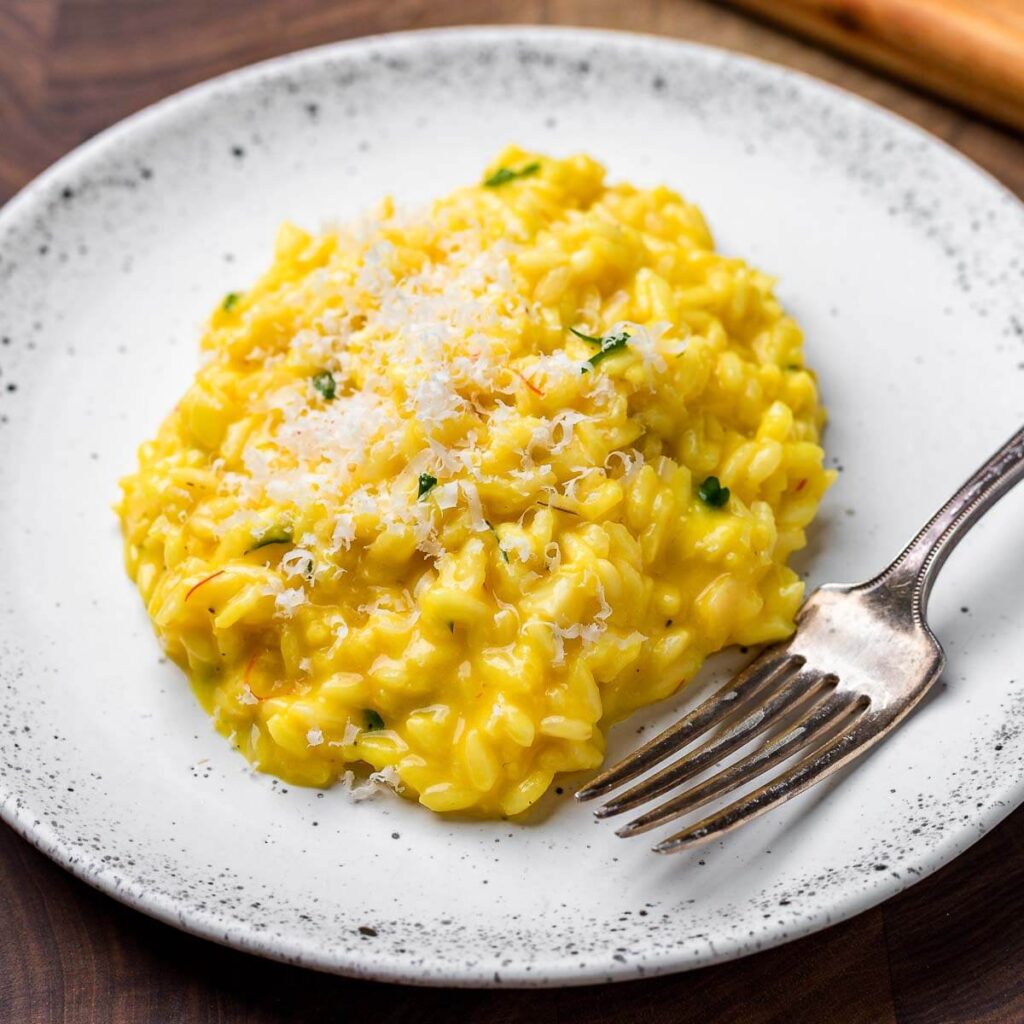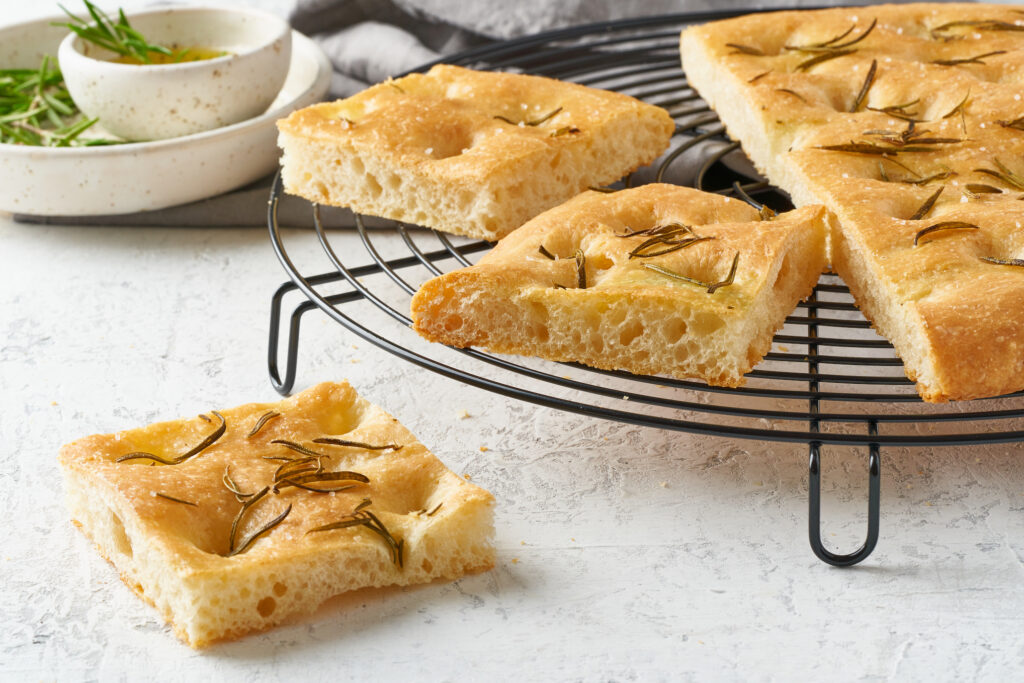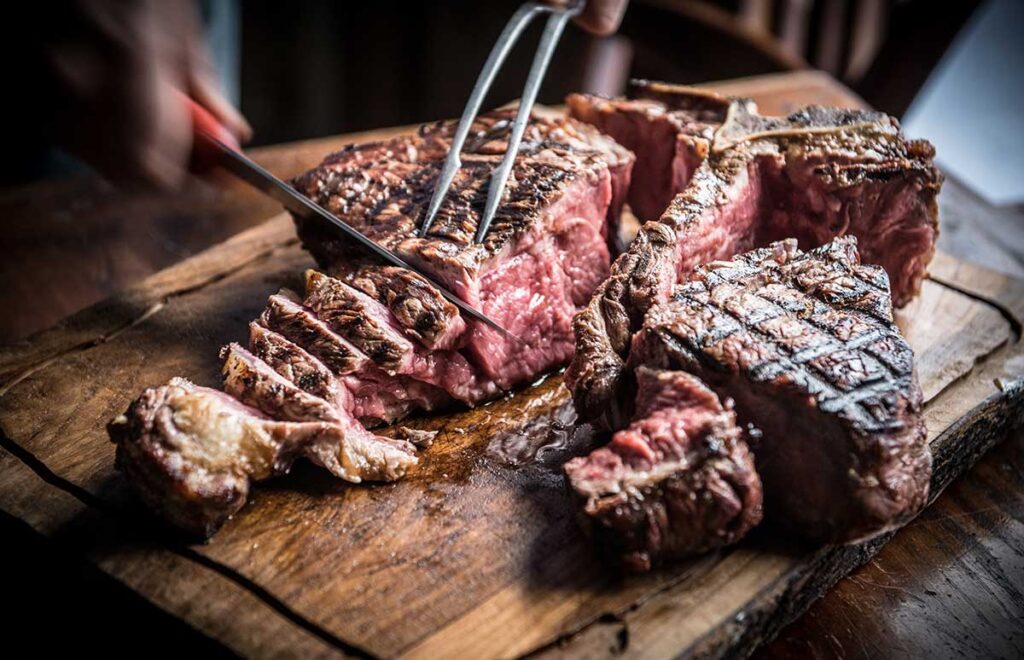7 of Italy’s Enticing Regional Food Specialties

Are you planning a trip to Italy with food at the forefront of your mind? Of course you are! You are surely longing for pasta, pizza, focaccia bread, risotto, Tuscan steak, and fresh truffles to name a few. It might surprise you to discover that each of these Italian specialties is mostly found in specific regions of the country, and that they may be scarce or even non-existent in others.
From north to south, this post covers some of the more popular and drool-worthy dishes.
Table of Contents
“A tavola non si invecchia.” (At the table, one does not grow old.) – Italian Proverb
Risotto
(Lombardy in the north)
The Italian word for rice is “riso” and the basis of the name risotto. It is a creamy rice-based dish originating in the early 1800’s in Milan, with the classic Risotto Alla Milanese.
This dish is prepared with beef stock, Parmigiano-Reggiano, and luxurious saffron. Risotto is also quite popular in the Piedmont and Veneto regions. Variations of risotto are almost endless, including mushrooms, shellfish, artichokes, sausage, and asparagus.
Alba White Truffle
(Piedmont in the northwest)
Only available from October to December, these delicacies are exclusive to the Piedmont region, particularly around the lovely town of Alba. They are in such worldwide demand that a single truffle can sell for hundreds of euros, and a pound can sell for thousands. Specially trained dogs are the most common means of hunting these treasures each fall. Once harvested, white truffles are served raw, and shaved over such foods as pasta, eggs, and beef. We have never been lucky enough to taste them but are currently planning an entire trip based on finding an opportunity to do so!
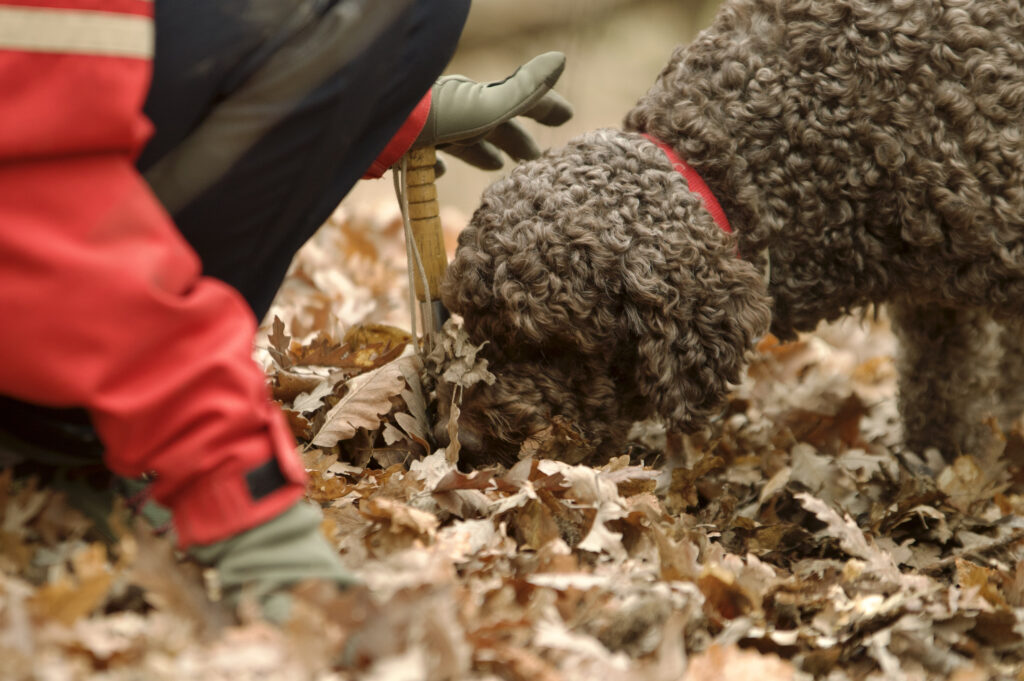
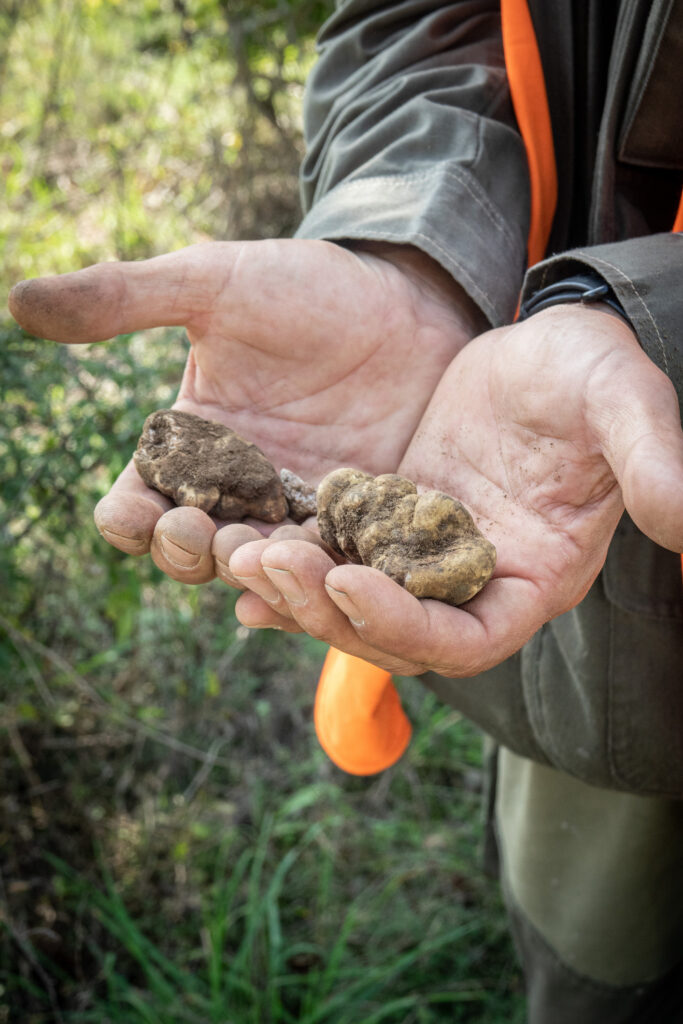
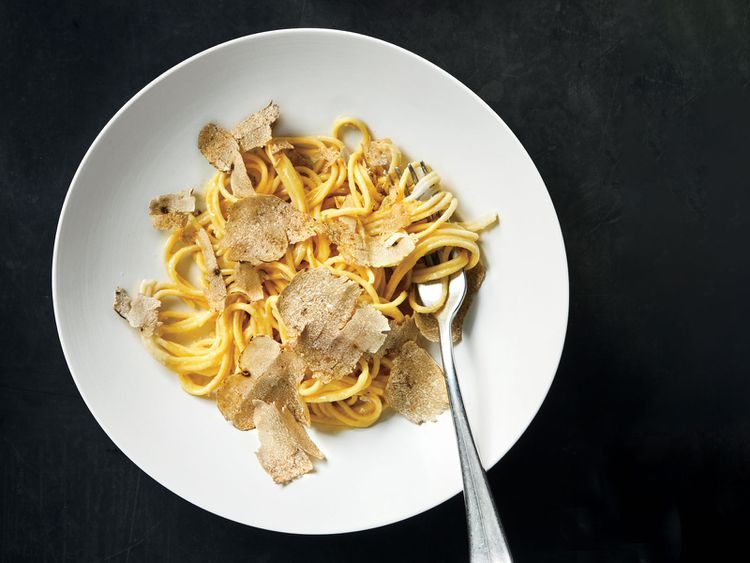
Focaccia
(Liguria in the northwest)
Created long before pizza, Focaccia is one of Italy’s most ancient foods. It is believed that this flatbread originated with the Etruscans of Northern Italy more than two thousand years ago. It was an unleavened flatbread made from just flour, water, and salt and cooked in a household fireplace. (Probably a bit bland!) The Latin name is panis focacius, meaning “hearth bread”.
Modern Focaccia includes yeast and generally has a crispy outer crust (with holes or dents in it), topped with olive oil and sea salt, and a soft inside. It is frequently topped with rosemary, sage, and/or garlic.
Focaccia is very versatile. Besides being served as a bread or side dish with lunch or dinner, residents near Genoa, for instance, enjoy dipping it in their cappuccino with breakfast. Some in Liguria prepare a sweet version, focaccia dolce, which is sprinkled with sugar and raisins or honey. It is also a popular hiking or after-school snack.
Ragù alla Bolognese
(Emilia Romagna in the north)
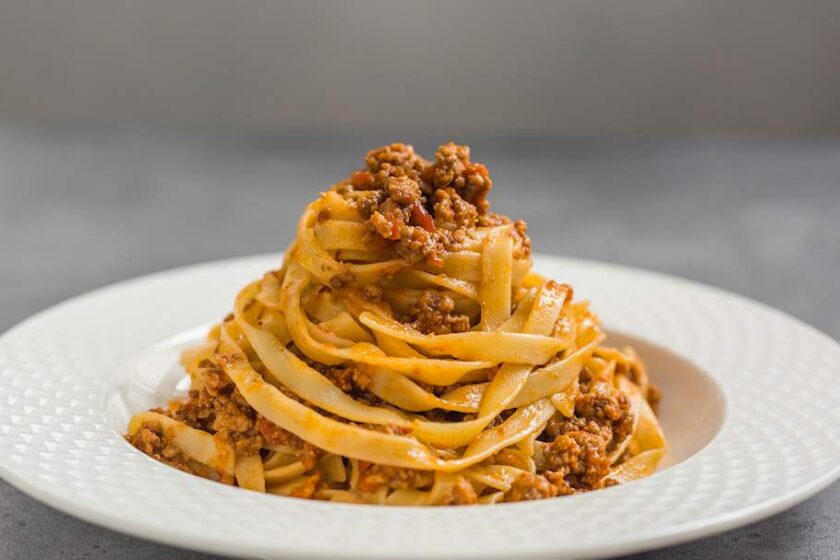
When dreaming of food in Italy, surely nearly everyone pictures a big bowl of pasta with meat sauce that Grandma has been tending to all day. The vibrant city of Bologna is the namesake for this dish, and the best place to try it. Homemade tagliatelle pasta is mixed with a creamy beef and pork sauce simmered for many hours with tomato and a sofrito of onions, carrots, and celery. It is topped, of course, with some freshly grated, locally produced, and aged Parmigiano Reggiano. (The cheese is worthy of an entire blog post of its own. Soon, I hope!)
Bistecca alla Fiorentina
(Tuscany in north-central Italy)
If you have watched Top Chef on Netflix, you are likely familiar with Dario Cecchini, perhaps the world’s most well-known butcher. Bistecca alla Fiorentina was already a prized specialty of Florence, but Dario made the rest of the world yearn for it as well. It is comprised of an enormous porterhouse steak from a Tuscan Chianina cow, cooked at very high heat for just a few minutes, and served rare to barely-medium-rare. These steaks are generally three-plus inches thick and between two and three pounds each. In Florence, at least, it is common (even expected) for two or three people to split a serving.
Carbonara Spaghetti
(Lazio region in south-central Italy)
This cheesy, savory pasta dish is a must-try in Rome, where it is legendary. Traditional carbonara contains only 5 ingredients: Spaghetti noodles, guanciale (cured pork cheek), black pepper, eggs, and pecorino Romano.
Historians believe the dish traces back to 1944, after the Allied forces liberated Rome. The troops were given rations of eggs and pork, and would bring them to restaurants in Rome to add to the pasta. Italian chefs took it from there.
More modern variations of the dish include substituting vegetables or seafood for the pork.

Neapolitan Pizza
(Campania in the south)
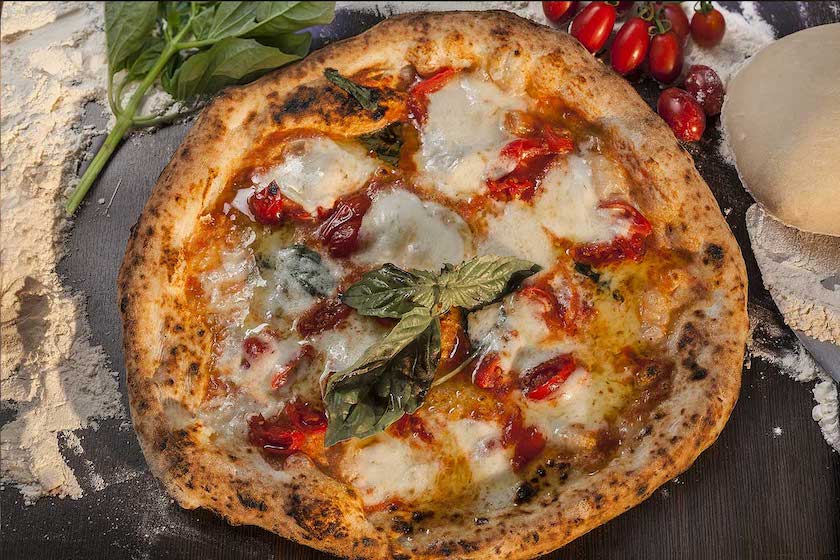
Naples is the birthplace of pizza. So we all owe it a nod of gratitude! Traditional Neapolitan pizza is simple. The only ingredients are: thinly sliced fresh mozzarella cheese, fresh basil, raw San Marzano tomatoes, olive oil, and the dough. No sauce. No additional toppings. The dough is made of just water, salt, yeast, and specific finely ground wheat flour. It is kneaded by hand or with a low-speed mixer. After the rising process, it is formed by hand (without so much as a rolling pin).
Neapolitan pizza is cooked for just 60-90 seconds in a stone oven heated to around 800 degrees Fahrenheit!
Cannoli
(Sicily, in the far south)
Who can forget the line from The Godfather: “Leave the gun; take the cannoli!”?
Cannoli may well be the most famous Italian dessert, certainly in the eyes of Americans. While it can be found in Northern and Central Italy, it is an absolute staple in Sicily. It consists of a tube-shaped flaky pastry with a fresh ricotta cheese filling. Frequent additions include chocolate chips, pistachios, dried fruit, and a host of other ingredients.
Some have toyed with substituting mascarpone for the ricotta. But that is just pure blasphemy!
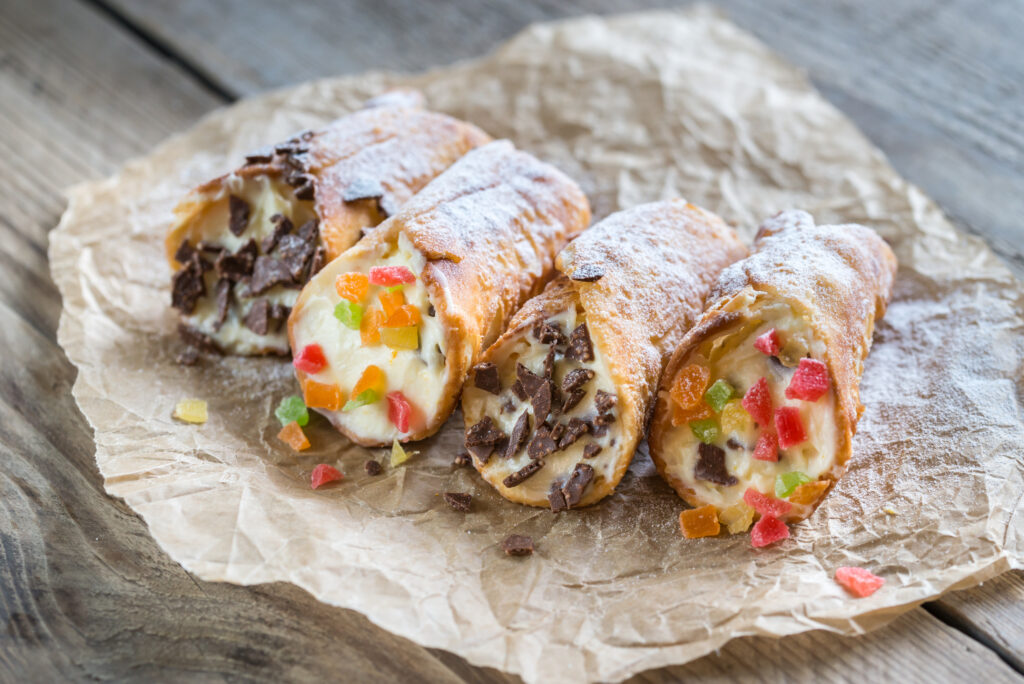
Are you in the planning stages of a trip to beautiful Italy, and interested in straying off the beaten path for a few days? We have some ideas! See: 4 Unforgettable Days in Piedmont & Hiking to the Magnificent Sacra di San Michele
Discover more from Werthwhile Wandering
Subscribe to get the latest posts sent to your email.

